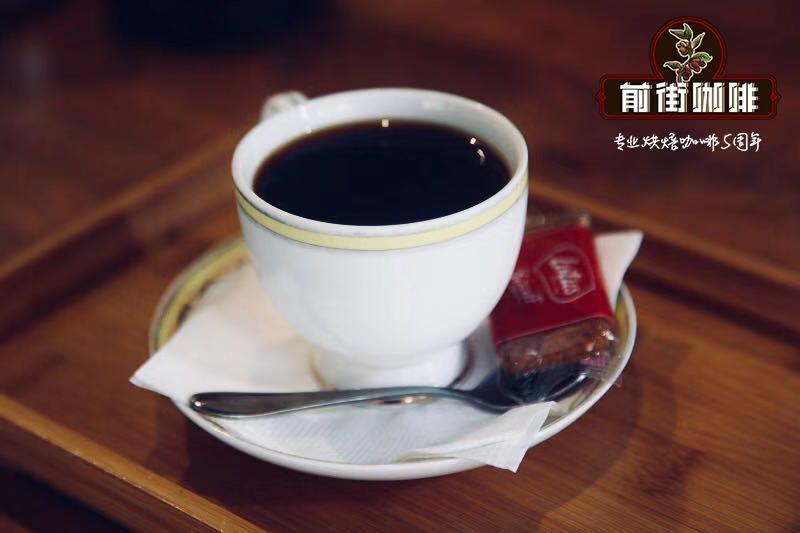What is the best coffee in Peru? which producing area is planted? how about Peruvian organic coffee?

Professional coffee knowledge exchange More coffee bean information Please pay attention to coffee workshop (Weixin Official Accounts cafe_style)
Peru-South America's most mysterious country, from September 21, 2016, conditional visa-free for Chinese tourists, in Peru you can feel the former Inca civilization and Amazon tribe, known as one of the best cooking food in the world Peru, the cute alpaca and Dutch pig are served on the table...
Peru is also known worldwide for its specialty organic coffee. It is the second largest organic coffee producer in the world and the third largest coffee exporter in South America. Currently, Peruvian coffee is recognized as one of the best coffees in the world. Soft sour, mellow taste, layered, rich sweet, in recent years frequently won the international coffee gold medal.
Although the history and popularity are not outstanding, Peru, as a rising star in the coffee world, has a unique mellow fragrance with the imprint of the Andes and the fragrance of the land, which makes countless travelers who did not intend to come here shine.
The secret lies in the plateau climate brought by the altitude of the Andes Mountains, as well as the suitable temperature, air, light and fertile soil. These unique geographical advantages lengthen the growing period of coffee beans and provide perfect conditions for planting delicious and aromatic Arabica coffee beans.
Arabica coffee
Arabica coffee beans are grown under harsher conditions than Robusta coffee beans, which can grow at lower altitudes, and are better at altitudes above 1500 meters. Arabica coffee beans, on the other hand, have a more balanced flavor, taste and aroma, and are mainly used in single-serve or boutique coffee.
At the end of the 20th century, coffee cultivation in Peru was in trouble due to lack of infrastructure and processing methods. Fortunately, in the early 21st century, with the help of the government, farmers found the immeasurable potential of this land and redeveloped better coffee, which brought Peruvian coffee to the world stage.
Today, Peruvian coffee has become a world-class premium coffee bean, one of the best coffees on the market today. It gives people the feeling of soft sour, mellow taste, layered, rich sweet, excellent taste also makes Peruvian coffee in recent years frequently won the international coffee gold medal.
Due to the adoption of small-scale farming models, farmers have no access to and do not use chemical fertilizers and pesticides, adhere to natural fertilizers, hand-picked and selected coffee beans, combined with mineral-rich organic soil, Peru coffee organic quality has gained global recognition, is now the world's second largest organic coffee producer.
It is worth mentioning that, with a sense of reverence for nature, Peruvian farmers understand the importance of sustainable farming. They use shade-grown methods to return coffee to its natural ecology, while also allowing insects and birds to survive here, improving coffee quality and protecting animal and plant ecology.
shade planting
Coffee is a fragile organic crop, and keeping trees in the same shade as coffee not only protects coffee from cold weather, but also cools unusually warm microclimates. Trees also help retain soil moisture, filter nitrogen and increase biodiversity.
Having said that, have you been planted? If you want to get a memorable cup of Peruvian coffee in this coffee-scented country, or bring two bags as a gift, which areas are the best destinations? What are the subtle differences in taste between them?
southern region
Including Apurímac, Ayacucho, Cusco, Madre de Dios, Puno
Travel through the Andes mountains, along with old Inca terraces, here in the southern Peruvian plateau, where coffee is rich and has a hint of citrus on the aftertaste.
Sacred Valley
Urubamba coffee grown in Cuzco and Machu Picchu, the wet processed beans are very smooth and have an attractive aroma. In this native land of the Inca Empire, remember to have a cup for breakfast.
puno
Quechua Coffee in Puno received the "Best Quality Award" at the Seattle Global Specialty Coffee Expo. If you come to Puno, you can enjoy a cup of "the best coffee in the world" in the courtyard of the Corregidor House, which was built in 1701.
central region
Including Huanuco, Junin, Pasco, Ucayali
The biggest characteristics of coffee in the central region are appropriate acidity, light and mild aroma, smooth and not too heavy alcohol, quietly wake up your taste buds.
Cha Ma You
Chancha Mayo in Junin District has always been known for its high quality coffee beans. Grown on the eastern side of the majestic highlands of the Andes, the palate is smooth, with intense chocolate and nutty qualities, as well as bright, sweet, citrus flavors that give a double enjoyment of smell and taste.
Oxapampa
Located in the Pascoe region in central Peru, Okapampa is known as Peru's first German and Austrian settlement. There is an excellent coffee growing base here, and after your visit, be sure to try the locally produced coffee for yourself.
The northern region
Including Amazon, Cajamarca, Piura and St. Maarten.
Coffee from the north, with high acidity, rich flavor, aroma, mellow and medium flavor.
Kahamaka
Cajamaca is one of the best coffee producing areas in Peru and is located in the Andean valley bordering the Amazon rainforest. The coffee produced here has the aroma of caramel and a hint of lemon and chamomile.
END
Important Notice :
前街咖啡 FrontStreet Coffee has moved to new addredd:
FrontStreet Coffee Address: 315,Donghua East Road,GuangZhou
Tel:020 38364473
- Prev

Introduction to the Flavor and taste of Fine Coffee in Inca Manor in Peru, South America
Professional coffee knowledge exchange more coffee bean information please follow the coffee workshop (Wechat official account cafe_style) Machu Picchu, located 75 kilometers northwest of Cuzco in present-day Peru, the entire site towers on a ridge about 2350 meters above sea level, overlooking the Urubamba Valley, surrounded by tropical jungles, is famous in Peru
- Next

Do you know what Arabica coffee beans are? how does Arabica coffee beans taste?
Coffee workshop (Wechat official account cafe_style) Arabica coffee beans are native to Ethiopia. With hints of jasmine, ripe melon and various citrus fruit aromas, Arabica coffee beans are famous for the delicate balance between bitterness and sweetness. Arabica coffee is very strict on planting conditions, fertile soil, wet
Related
- Beginners will see the "Coffee pull flower" guide!
- What is the difference between ice blog purified milk and ordinary milk coffee?
- Why is the Philippines the largest producer of crops in Liberia?
- For coffee extraction, should the fine powder be retained?
- How does extracted espresso fill pressed powder? How much strength does it take to press the powder?
- How to make jasmine cold extract coffee? Is the jasmine + latte good?
- Will this little toy really make the coffee taste better? How does Lily Drip affect coffee extraction?
- Will the action of slapping the filter cup also affect coffee extraction?
- What's the difference between powder-to-water ratio and powder-to-liquid ratio?
- What is the Ethiopian local species? What does it have to do with Heirloom native species?

